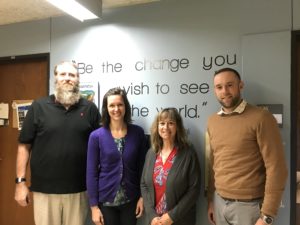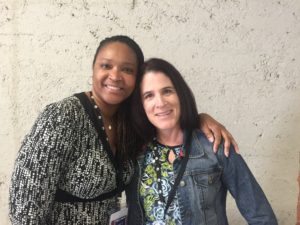#APM19 – Building Capacity for International Field Placements: A Program Development Checklist

Are you attending the Council on Social Work Education’s Annual Program Meeting in Denver this week? Want to know more about how to do an international social work field placement? Do you need a session to attend on Friday, October 25th at 7:30 AM? Well, then we have a session for you. Please consider attending the panel discussion about the ongoing development for our international field placement checklist; which I am doing with my good colleagues from the Department of Social Work at the University of Alabama at Birmingham. Colleen Fisher, Mary Jacque Carroll, Stacy Moak and I will talk about how the key benefits, challenges, and social justice considerations of developing new international field placement, and review our checklist which is in the early stages of development. Overall, our goals is to share our capacity building strategies for international placements through a practical checklist designed for social work.
For those of you who cannot make the presentation, we are including some details in this blog post. First, here are some screen shots of our checklist:
#APM19 – Evolving the Signature Pedagogy with the Social Media Toolkit for Field Educators

On October 27, 2019 at 8:45 AM, during the Annual Program Meeting for the Council on Social Work Education in Denver CO, Mary Jacque Carroll, Allison M. Curington, Robyn V. Snider and I will be presenting on information and tools that field directors can use to guide curricular development and assessment strategies around interprofessional communication with digital and social technologies. If you are still in Denver, please come find us in Governor’s Square 11 – Plaza Building of the conference hotel. We’ll also be sharing how you can develop your own professional social media policies to support communication with students and field agencies as well as how to create activities for students in field to increase understanding of the ethical use of social and digital media in social work practice.
You’ll also learn how to access the Social Media Toolkit for Field Educators, a free resource with educator’s guide and a PowerPoint slide deck.
#APM19 The Flip(grid) Classroom: Utilizing the Microsoft app Flipgrid to promote student learning

Editor’s Note: In this blog post, I have asked four colleagues from the University at Buffalo School of Social Work to share some information about their presentation at the 65th Annual Program Meeting for Council on Social Work Education next week in Denver, CO. Katie McClain-Meeder, Michael Lynch, Todd Sage, and Margie Quartley will share about their experiences using Flipgrid, a video-based discussion forum, in the social work classroom. In full disclosure, they did ask me to record a video for their presentation, so I may be making a guest appearance during the presentation. Also, you might be interested in reading Todd’s previous blog post about FlipGrid – Incorporating Flipgrid into the Social Work Classroom: Tips for #SocWorkEd.
On October 26, 2019 at 10:30 AM, we (Katie MaClain-Meeder, Michael Lynch, Todd Sage and Margie Quartley from the University at Buffalo School of Social Work) will be presenting an interactive workshop titled The Flip(grid) Classroom: Utilizing the Microsoft app Flipgrid to promote student learning, at the Council on Social Work Education’s Annual Program Meeting. We will be in the Governor’s Square 11 in the Plaza Building.
We know that students are increasingly expecting instructors to utilize new technology to enhance instruction beyond the traditional classroom lecture and content. It is imperative that instructors find meaningful and relevant opportunities to integrate tech into the classroom. Our interactive workshop will introduce you to the video discussion app Flipgrid, which allows students and instructors to quickly and easily interact using short video responses that can be captured via computer or mobile technology. We will highlight case examples, including use for field education, new student orientation, and ways to add depth and breadth to in-person and online instruction.
By attending our workshop, you will learn best practices for introducing and structuring Flipgrid for a variety of educational purposes as well as how to manage Flipgrid from the administrative side, including how to grade, respond and manage discussions. The workshop will also culminate with an opportunity for you to set up their own “grid” with support from us, the workshop instructors.
Tips for New Online Social Work Educators

Editor’s Note: Melissa Thompson, MSW is a lecturer at Dominican University in Chicago, IL, and tweets at @mmt98. Nathalie P. Jones, PhD, MSW is an Associate Professor of Social Work at Tarleton State University and tweets at @Dr.NJones. In this blog post, they share their best tips for social work educator who are new to online teaching.
According to the National Association of Social Workers’ (NASW) Technology Standards for Social Work Practice (2017), social workers are urged to use technology in an ethical manner for practice and learning environments. In higher education, we hear about “digital native” students, who have grown up with a life centered on technology and who present as digital super humans. However, research is increasingly showing this concept to be a myth, and that designed learning environments focused on this myth can lead to poor learning outcomes (Kirschner & De Bruyckere, 2017). Another myth we often see among social work educators is the perception that non-traditional students are resistant to the use of technology in the classroom. Recent data from the Council on Social Work Education’s (CSWE) National Workforce Data Brief (2018) shows this to be a myth as well, reporting that when it comes to online education in social work, the highest enrollment rates were non-traditional students.
#SWTech – An Introduction and History of the Online Group
Editor’s Note: This blog post was written by the following users of the #SWTech Community – Melanie Sage, Assistant Professor of Social Work at the University at Buffalo; Laurel Iverson Hitchcock, Associate Professor of Social Work at the University of Alabama at Birmingham: Jonathan B. Singer, Associate Professor of Social Work at Loyola University and founder of the Social Work Podcast; and Nancy J. Smyth, Professor & Dean at the School of Social Work at the University at Buffalo.
This is an introduction to #SWTech, an online network of social workers interested and engaged with technology for social good. Our goal is to help individuals new to #SWTech learn about the norms, history, and general merrymaking within the community. This statement can also service as a resource to send people who are interested in learning more about #SWTech.
Description
#SWTech is a hashtag used by people and groups interested in the intersection of social work and technology. People use #swtech primarily on Twitter, but the hashtag is occasionally used on other social media platforms such as Facebook or Instagram. This hashtag is used in tweets and other posts on social media to share about such topics as:


